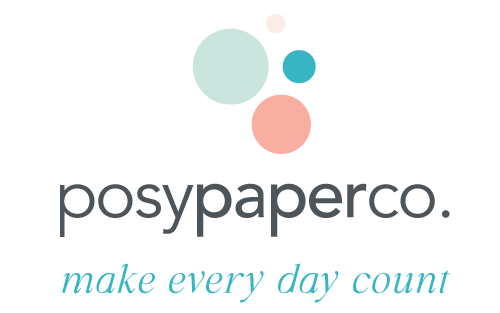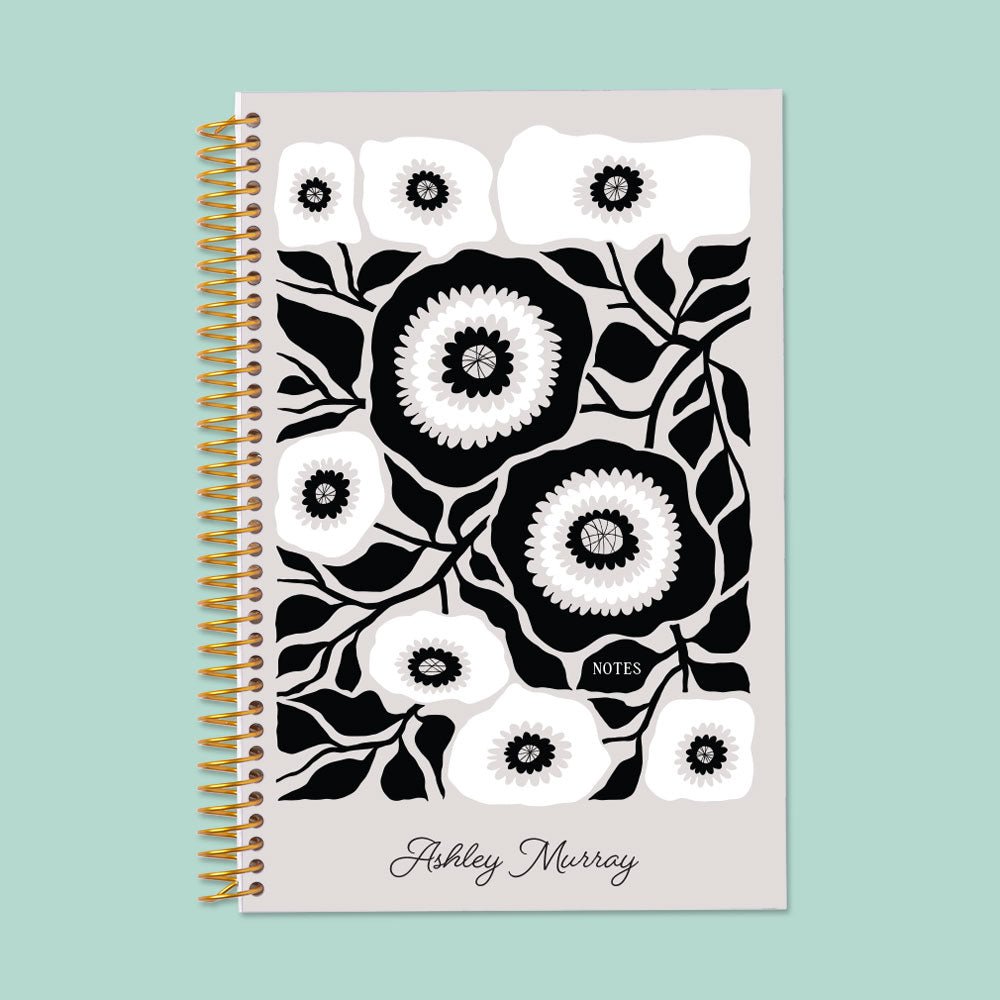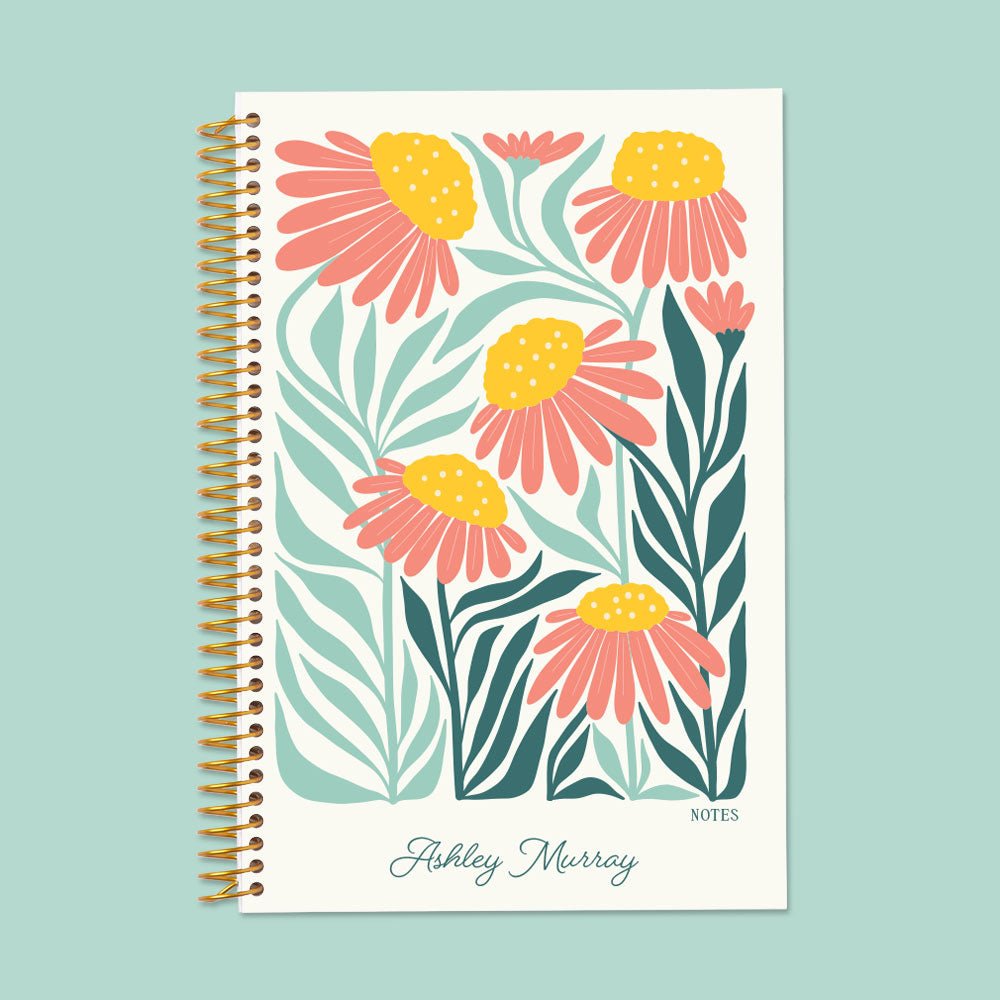
Table of Contents
- A Gentle Moment to Begin
- Why Handwriting Still Matters
- How Handwriting Builds Calm Organization
- The Posy Paper Co. Approach to Calm Planning
- How to Build a Handwriting Habit That Sticks
- Why This Matters (for Every Type of Planner)
- Real Posy Moments
- Three Small Handwriting Practices
- Common Mistakes to Avoid
- The Heart of It All
- Frequently Asked Questions
Picture this: you open your planner in the morning, uncap your favorite pen, and write three simple words — “Today, I breathe.” Your handwriting flows slowly, your mind softens, and suddenly your day feels lighter.
That tiny moment? It’s more powerful than you think. Handwriting does something digital tools can’t — it engages your mind, emotions, and senses all at once. It’s not just about recording what you have to do; it’s about calming how you feel while you do it.
At Posy Paper Co. we started this journey because we couldn’t find planners that actually fit the way we lived — ones that felt beautiful, supportive, and flexible enough to change with us. So we made our own. We’ve spent years refining our designs based on what we wished we had: space to breathe, freedom to personalize, and layouts that make life feel a little less overwhelming.
Why Handwriting Still Matters

Even in a digital world, handwriting remains one of the most emotionally grounding things you can do. It’s tactile, slow, and deeply personal — the exact opposite of the constant notifications that pull us in a hundred directions.
It activates deeper brain connections
A 2023 study published in Frontiers in Psychology found that writing by hand activates far more widespread brain connectivity than typing. (Read the study) When we write, areas related to attention, movement, and memory light up together.
So when you write in your planner, you’re not just jotting a to-do list — you’re strengthening focus and building a stronger emotional memory of your goals.
It supports emotional clarity
Handwriting has been shown to reduce stress and anxiety through expressive writing. A review in the U.S. National Library of Medicine found that handwriting interventions significantly improved mood and emotional regulation. (Source)
Writing helps you process emotions — it slows your thoughts, gives them shape, and creates a sense of order.
When you write down what’s worrying you or reflect on something you’re grateful for in your planner, you’re helping your nervous system calm down.
It helps you feel present
According to Psychology Today, the sensory feedback of handwriting — the drag of the pen, the texture of the page — helps your brain enter a focused, mindful state. (Read more)
You can’t handwrite and scroll at the same time. That physical pause creates mental space.
How Handwriting Builds Calm Organization

Your planner is more than a schedule — it’s a mirror for your mind. When you handwrite, you’re not just managing your time; you’re organizing your thoughts and emotions, too.
It slows you down (in a good way)
Writing by hand — or pen-to-paper planning, as many call it — takes longer, which means you’re giving yourself time to think before you act. That pause helps reduce overwhelm and keeps your day intentional instead of reactive.
It helps your thoughts stick
Studies show handwriting improves memory retention compared to typing. (Scientific American) That’s why the act of writing your goals, habits, and priorities in your planner makes them feel real.
It turns chaos into clarity
When you handwrite your lists, notes, or reflections, you create structure out of mental clutter. Writing slows your thoughts just enough for you to see patterns — what matters most, what can wait, what’s bringing you joy.
The Posy Paper Co. Approach to Calm Planning

At Posy Paper Co., every detail of our planners was designed to support calm handwriting and emotional connection.
Our pages are thick (no bleed), our layouts are open and uncluttered, and there’s extra space for reflection. Whether you’re using our 6×9 Fitness Planner or a journal from our Personalized Planner Collection each spread invites you to write, reflect, and breathe — not rush.
Here’s how handwriting in your planner compares to using a digital app:
| Feature | Digital To-Do List | Handwritten Planner |
|---|---|---|
| Speed | Fast entry, easy to forget | Slower pace that encourages reflection |
| Memory | Stored externally | Deeply encoded in memory |
| Emotional Engagement | Minimal | High — engages mood and creativity |
| Personalization | Limited | Fully flexible (colors, doodles, layout) |
| Calm Factor | Often overstimulating | Physically grounding and mindful |
It’s not about nostalgia — it’s about choosing a process that makes you feel centered, present, and clear.
How to Build a Handwriting Habit That Sticks

1. Start small
Set aside five quiet minutes with your planner. Write one intention for the day: “Stay calm in meetings” or “Remember to rest.”
2. Make it sensory
Light a candle, pour tea, and use a pen that glides. Your Posy planner’s paper is smooth enough for gel pens and highlighters — a small detail that makes writing feel soothing.
3. Add reflection
Use the built-in “Weekly Review” or “Notes” section to write one thing you learned or felt proud of this week. Those words create connection between what you did and how you felt.
Or, if you love journaling, explore our Posy Journal Collection — each one designed with thick paper and wide spacing to make handwriting an everyday ritual.
4. Use handwriting for self-check-ins
Try this once a day: write one sentence that starts with “Today I feel…” It doesn’t need to be profound. Just real.
5. Celebrate progress
Flip through your past weeks and read your notes. Seeing your own handwriting across pages — messy or neat — reminds you how much life you’ve already lived and managed.
Why This Matters (for Every Type of Planner)
For Planner Enthusiasts (25–45)
You love the look and feel of a beautiful planner. But handwriting adds depth — it transforms your planner from decoration to reflection.
For Professionals & Small Business Owners
You spend most of your day typing or talking. Writing by hand grounds you. It turns your planner into a space for clear thinking — not another screen.
For Busy Moms & Caregivers
Your days are full of moving parts. Taking a minute to write something — anything — in your planner is an act of calm in the middle of the noise.
For Creative & Intentional Individuals
You see your planner as an extension of your mind. Handwriting lets you express mood and creativity right on the page — color, flow, and personal rhythm.
Real Posy Moments: How Handwriting Changed My Routine
When we were first designing our planners, I made it a goal to handwrite a small “brain dump” each morning — a list of everything on my mind.
Five minutes later, the noise in my head was on paper. I could see what mattered and what didn’t. I could breathe.
That daily habit shaped our designs: wide spacing, calm layouts, and flexible notes pages that invite handwriting — not just planning.
It’s proof that handwriting doesn’t just organize your day — it changes your emotional state.
Three Small Handwriting Practices to Try This Week
1. One-Sentence Reflection
At the end of each day, write one sentence: “Today I learned…,” “I noticed…,” or “I’m thankful for…”
2. Color-Coded Mood Bar
In your planner’s weekly spread, draw a thin bar under each day and color it based on your mood — soft yellow for calm, green for productive, blue for tired. Over time, you’ll see patterns you didn’t notice before.
3. Handwritten Gratitude List
On Sunday evening, open your Self-Care Planner and list three small things you’re grateful for. Don’t overthink it — handwriting slows you enough to really feel gratitude.
If you prefer a more open layout for free writing, your Self-Care Planner includes extra reflection pages perfect for gratitude, intention setting, and personal notes.
Common Mistakes to Avoid
- Don’t write in a rush — the benefit comes from slowing down.
- Don’t skip reflection pages — they’re where the calm happens.
- Don’t worry about handwriting style — neatness isn’t the goal.
- Don’t expect perfection — use your planner to record life as it is, not how you wish it looked.
The Heart of It All: Calm, Clarity, and Connection

When you write by hand, you bring your thoughts into the present moment. You see them. You feel them. You start to make sense of them.
That’s why handwriting inside your planner isn’t a task — it’s a quiet form of therapy. It’s you, giving yourself permission to pause.
So, here’s your invitation:
- Open your planner tonight.
- Write one word, one thought, or one intention.
- Let the rest unfold naturally.
If you’re looking for a planner that makes writing feel calm and joyful, explore our Posy Planner Collection — thoughtfully made to support the handwriting habits that bring peace, purpose, and beauty into everyday life.
Or, discover more ideas on calm planning, handwriting, and intentional living over on the Posy Blog: Wellness & Organization Articles.
Because your words deserve more than a screen. They deserve a home that feels like you. 💛









